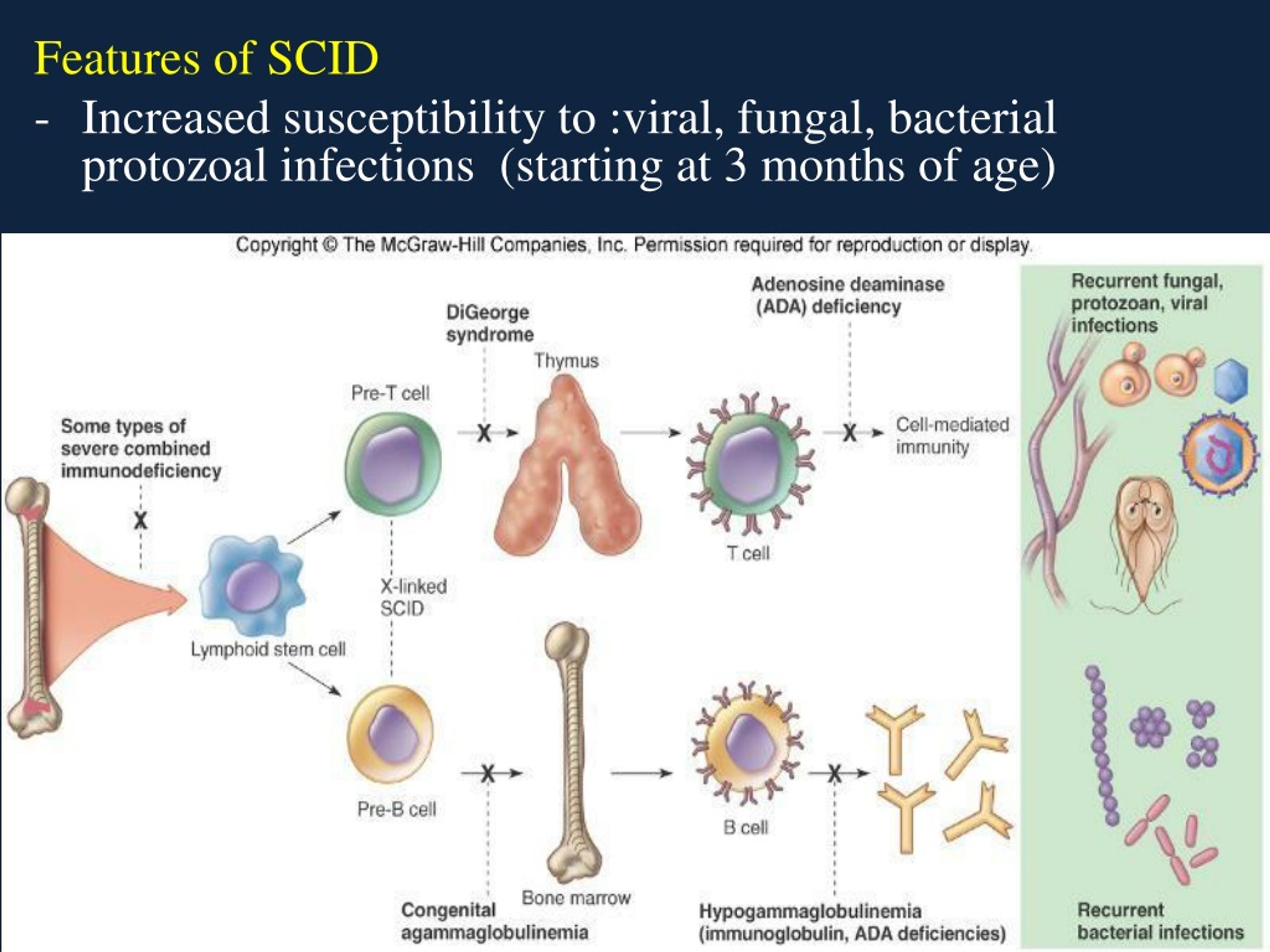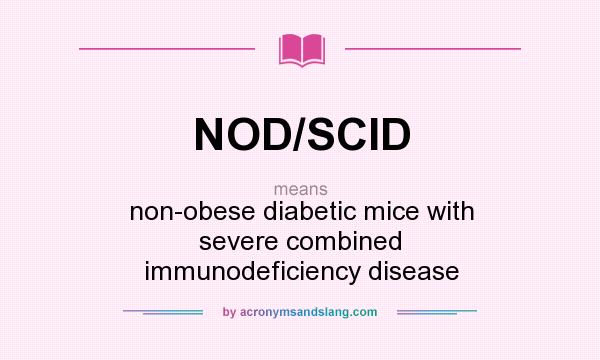
The condition is fatal, usually within the first year or two of life, unless infants receive immune-restoring treatments, such as transplants of blood-forming stem cells, gene therapy, or enzyme therapy.

Infants with SCID appear healthy at birth but are highly susceptible to severe infections. Severe combined immunodeficiency disease has also been called the boy-in-the-bubble disease or bubble boy disease.Severe combined immunodeficiency (SCID) is a group of rare disorders caused by mutations in different genes involved in the development and function of infection-fighting immune cells. Injections of PEG-ADA will protect them against recurrent infections, allow them to control ordinary childhood infections such as chicken pox, and make it feasible for them to lead nearly normal lives. Children whose SCID is due to ADA deficiency have another alternative. A bone marrow transplant from a matched donor or parent is arranged as quickly as possible. A lasting remedy, however, requires a more drastic approach. IVIG may help to bolster the immune responses. The immediate concern is to bring any current infections under control, and to strengthen the baby's weakened condition with adequate nutrition. The treatment of SCID constitutes a medical emergency. Other threats come from the viruses that cause cold sores ( herpes simplex) and measles ( rubeola).

For example, the virus that causes chicken pox ( varicella) can trigger a severe infection in the lungs and the brain of SCID patients. Viruses that are not harmful in children with normal immunity can pose a serious danger. Meningitis and blood poisoning pose a constant threat. Some children develop a sharp, persistent cough with Pneumocystis pneumonia, blood disorders, or chronic hepatitis. Weakened by chronic diarrhea, the baby may stop growing and gaining weight. Usually by the time a baby is three months old, he or she (because many cases of SCID are X-linked, SCID is more common in boys than in girls) is likely to have persistent thrush or extensive diaper rash. Although the specifics vary from case to case, these children are vulnerable to serious infections caused by bacteria, as is typical with a B cell deficiency, and also by viruses and opportunistic germs, as is the case with a T cell deficiency. The child lacks almost all immune defenses, develops life-threatening infections, and needs major treatment to survive beyond infancy. Whatever the underlying problem that causes SCID, the consequences are nearly always the same. Without this B cell/T cell communication, the immune defenses are compromised. Class II MHC molecules, which appear on many immune cells, allow B cells and other immune cells to recognize, interact with, and activate T cells. MHC molecules are specialized proteins found on the surface of body cells and play an important role in bone marrow transplantation. Yet another type of SCID is known as MHC class II deficiency or bare lymphocyte syndrome.Purine nucleoside phosphorylase (PNP) deficiency results from a similar enzyme problem, but B cells are less affected and the immunodeficiency is less severe, although affected patients may have other problems (neurologic).Without ADA, poisons build up and kill the lymphocytes.



 0 kommentar(er)
0 kommentar(er)
